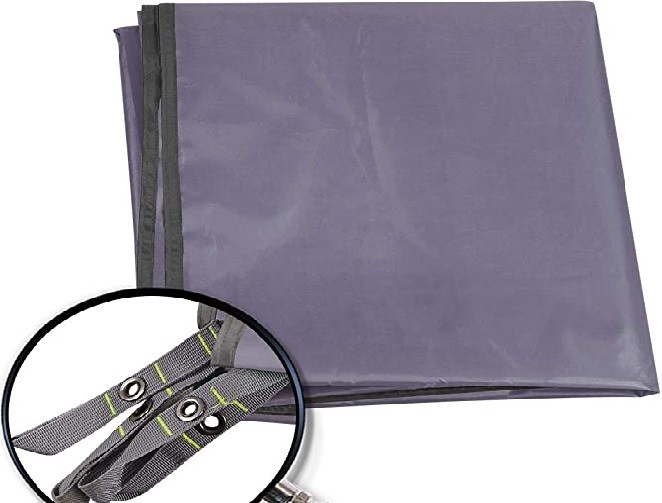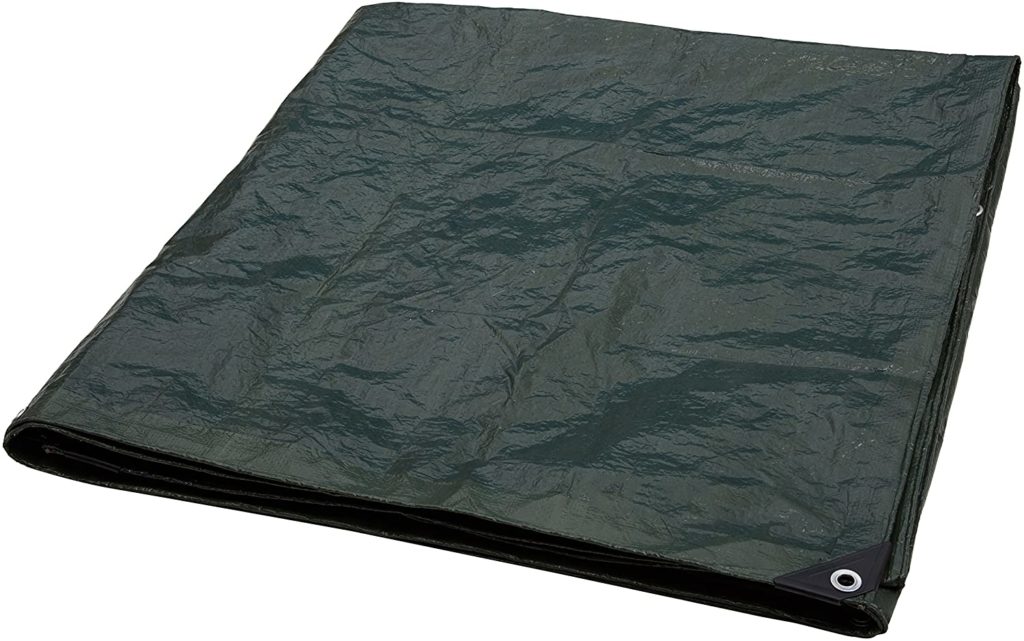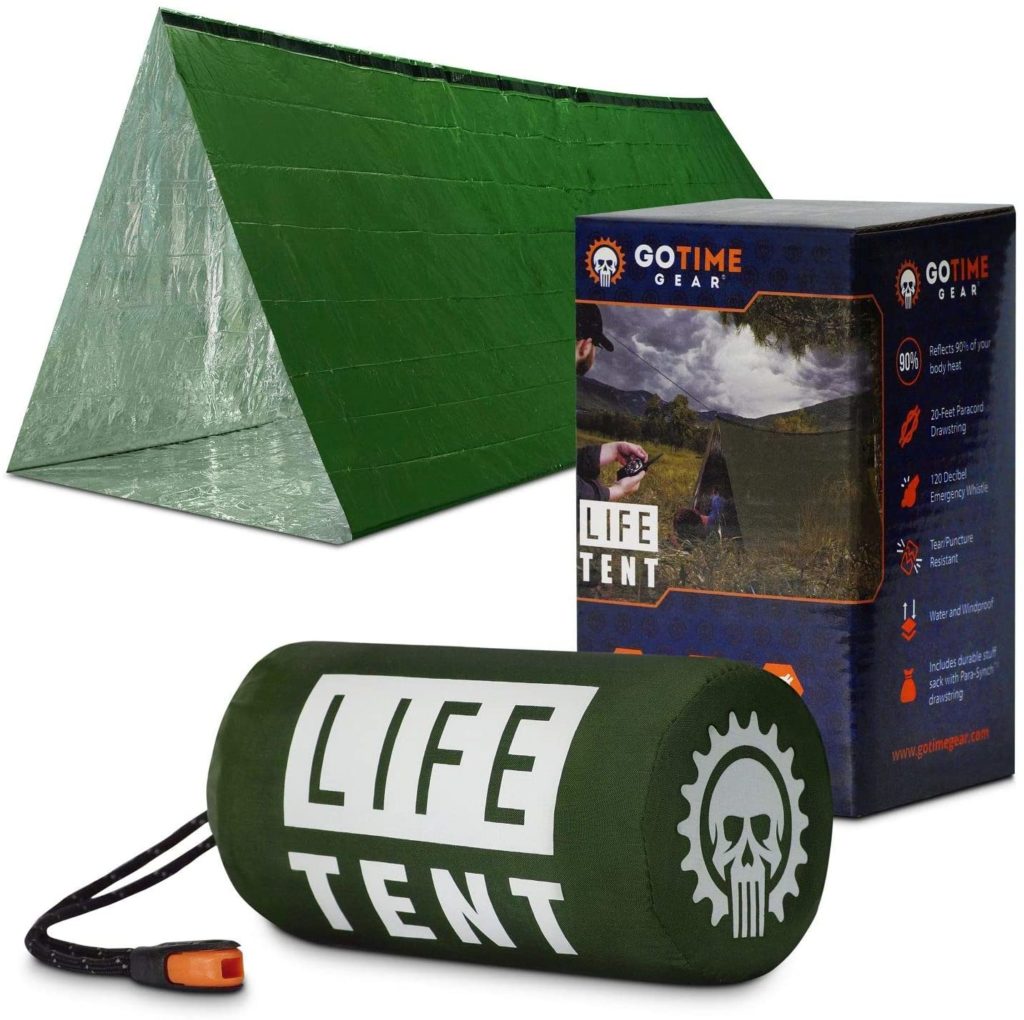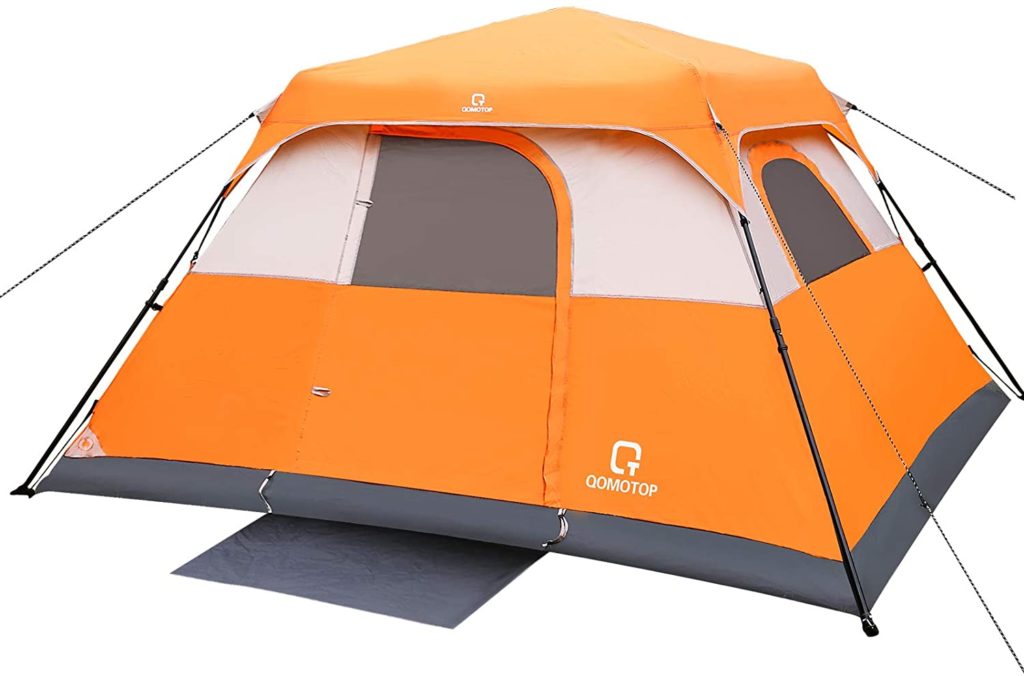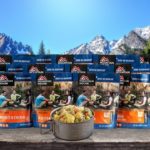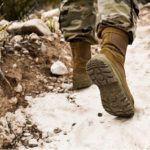A shelter is fundamental for your ability to survive an emergency. The right choice of shelter will give you:
- Privacy
- Safety
- Warmth
- Dryness
Finding an uninhabited cave or building shelter from leaves are valid options, but you’d be better off having a survival tent with you. Tent technologies have been refined over the last 43,000 years and are now more specific, elaborate, and sophisticated.
There’s a lot that goes into building a tent, and if the manufacturer uses the right fabric and incorporates proper stitching, the shelter will serve its purpose. The best survival tent is bound to serve you and your family through winter, summer, and everything in between.
With so many survival tents in the market, decision-making making can be a daunting task. This comprehensive guide to the five best survival tents can help your family – large or small – get ready for an emergency. It covers the top considerations, an in-depth review, and expert tips for maintaining and caring for the tents.
Top Survival Tent Considerations
Whether you have used a tent before or you are fairly new to the scene, it is critical to know the essential aspects to consider when choosing the best survival tent. Below are the main points of reference to get a handle on.
Price
Whether you have used a tent before or you are fairly new to the scene, it is critical to know the essential aspects to consider when choosing the best survival tent. Below are the main points of reference to get a handle on.
The Capacity
Single people that aren’t living with family can consider single-person or two-person tents. Single-person tents are great, but they can be a little claustrophobic. If you want to enjoy a little bit of space and fit a friend, when need be, a two-person tent would be ideal.
If you have a family to bug out with, you definitely want a survival tent that can fit everyone inside. It is advisable to go big for such arrangements. If you are worried about weight, remember that you can get rid of some non-essential items in your bug-out bag or consider delegating the carrying responsibilities to other family members. Here is a guide on getting the sizing right.
- Tent for 1-2 people – 9*12 to 12*12
- Tent for 2-3 people – 12*15 to 12*18
- Tent for 4-5 people – 15*18 to 15*24
Rain Protection
The worst survival experience would be to wake up trapped inside a wet bag. The best survival tent 2021 is one that is made of a single waterproof wall or one that comes with a rain fly. So, remember to look out for the waterproof properties of any tent before you buy it.
Vestibule Storage Space
A mudroom for your tent is necessary for keeping out muddy gear and boots outside the tent, while still protecting them from the snow and rain. If you can get a tent with a vestibule feature with dedicated exterior rainwater channels, the better equipped you’ll be for wet weather.
Color and Shape
If you hang out on the sides of a mountain, usually characterized by high winds, you should consider low-profile aerodynamic tents for survival. On color, shades that blend with the natural surrounding can make it difficult to find help. Bright orange is highly visible and might attract the attention of rescuers.
Ease of Setup
Some bug-out survival tents can take a lot of time and effort to set up. It will be less frustrating if you opt for one that is intuitive and easy to set up. Remember that you’ll probably be tired, the rains could be minutes away from pouring, you could be injured, or it might be getting dark in a few minutes. Generally, tents with fewer ‘moving parts’ or components are easier to set up.
Packed Size and Weight
You don’t need an aching back when you’re trying to survive, and the best survival tent should therefore be portable and lightweight. Most survival tents weigh from a couple of pounds to over ten pounds, and anything in the middle of this range is ideal. It is also vital to balance the ratio between packed weight and size to functionality and features.
Durability
Agreeably, most modern fabrics are durable. But make sure that the material used on your tent can remain durable in extreme environments in the wild.
How to Maintain and Care for the Best Survival Tents
You might have invested in the best survival tent, but it might not serve you as it should if you do not take proper care of it. So, make sure that you take adequate care of it, and it will take care of you when you bug out in an emergency.
Check Out the Manufacturer’s Manual
It doesn’t matter how many times you have set up a tent before; it is critical to read the instructions of a new tent after purchase. Each tent is different, and survival tents are built for unique environments.
Be Gentle with the Moving Parts
While zippers and tent poles are designed for durability, they can still break if you are not careful. These damages are fixable if you are in familiar environments, but replacement may not be that easy if you are stuck in the wilderness. So it’s better to be gentle when you open and set up the tent.
Air-Dry Before Storage
Mildews and molds thrive in wet environments, and locking a wet tent in a bag can encourage them to grow in there. Perspiration, dew, snow, or the rain can leave you with a wet tent, and preppers need to air-dry it before storage.
Roll it Up Well
Simply stuffing the tent away in a sleeping bag is a bad idea because it causes the material to crease and crumple. And these creases create weak points that can ruin your tent’s waterproofing abilities and durability. Proper storage involves rolling it up neatly and tightly before putting it back in a bag.
Invest in a Tap or Footprint
Your tent can serve you longer if you use a tarp or footprint beneath it every time; like the REDCAMP Waterproof Camping Tarp. Notably, most manufacturers design a footprint for individual tents, and you can buy one specifically made for your survival tent. Alternatively, you can get a standard footprint like Amazon Basics Waterproof Camping Tarp that can fit most tents, or go for a tarp that can be folded to the size of the tent.
Pitch the Tent Away from Direct Sun Exposure
While the sun is good for air-drying, exposing your tent for extended periods can ruin the waterproofing chemistry. It is worth noting that setting up in the sun can be unavoidable sometimes, but if you can keep it shaded, the better.
Keep the Dirt Away
The less frequent you have to clean your tent, the better for you. So, make sure that you shake off the insects, twigs, leaves, and dirt from the tent before folding it up for storage. Also, remember to keep your shoes outside to avoid bringing in dirt and debris.
Avoid Machine Wash
The tumbling of a washing machine can ruin your tent. Preppers are also discouraged from using hot water and detergents in cleaning. This is how you clean it up instead:
- Use cold water, non-detergent soap, and a sponge
- Clean the interior and exterior of the tent
- Check if the zippers and seams need cleaning
- Scrub off any mildew, mold, dirt, or cake mud
- Wipe down the tent
Air dry in direct sunlight to naturally kill bacteria and germs
Review of the 5 Best Survival Tents
Below is a review of the five best survival tents for families of various sizes. It covers a description of the tents and the pros and cons of each tent.
ALPS Mountaineering Lynx 1
Best Survival Tent for Windy Terrain
ALPS Mountaineering Lynx 1-Person Tent is one of Amazon’s best choices of tents. It is ideal for a single person and can come in handy if you are stuck in mountain terrain because it is designed with strong poles that can withstand wind in mountainous terrain. This tent is 2’8 x 7’6 x 36” center height, and weighs 4 lbs. 1 oz
Pros
- Very roomy and comfortable inside
- Easy to assemble with clips that snap over its aluminum poles in an instant
- Vestibule to store extra gear, especially in wet weather
- Side mesh storage pocket and an overhead loft to keep essential gear within reach
- Half mesh walls for great ventilation
- Polyester fly that resists UV damage
- Coated floor and factory seamed fly for best weather protection
- Durable zippers
Cons
You can only sit straight at the center of the tent.
Go Time Gear Life Tent Emergency Survival Shelter
Best Survival Tent for Backpacking
The tent is easy to carry in an emergency. This 8’ x 5’ flat tube tent provides a variable base of approx 8’ x 2’8, with a 36” center height when assembled. It only weighs 8.7 ounces, packing into a 5.25” x 3.25” stuff sack. This makes it excellent for backpacking. What’s more, Go Time Gear Life Tent Emergency Survival Shelter is available in orange, which makes it quick and easy to attract attention and find help fast enough.
Pros
- Compact and lightweight
- Reflects heat
- Puncture resistant
- Windproof and waterproof
- Durable nylon cord
- Easy to carry
- Fast and easy to set up
- It comes with a 120-decibel whistle and a 20 feet high-strength paracord rope
Cons
- It is not fully recyclable
- Has no door
OT QOMOTOP 4 Person Pop-up Tent
Best Survival Tent for Unpredictable Weather
This tent is round in shape and can shelter up to 4 people in whichever season. It saves preppers setup time and gives them more time to rest and find help thereafter. OT QOMOTOP 4 Person Pop-up Tent, 10 Sec Setup is suitable for environments with unpredictable weather because of its unbelievably short setup time. This tent is 9’5 x 7’ x 50”, and weighs 9.7 lbs.
Pros
- 10-second setup
- Waterproof and windproof
- It has a front and a back door
- Upgraded ventilation system that keeps away heat on hot evenings and prevents condensation on cold mornings
Cons
- An adult cannot stand straight in the tent
Coleman Sundome Tent
Best Survival Tent for Small Families
Interestingly, this tent is Amazon’s number 1 bestseller. It has sizes for small families, and you can shop for tents that can fit 2, 3, 4, and 6 persons. Coleman Sundome Tent 2/3/4/6 Person is round-shaped and has a rainfly feature to keep you and your small family dry in an emergency. The 2-person tent is 5’ x 7’, with a 48” center height, and weighs 6.38 lbs. The 6-person edition is 10’ x 10’, with a 6’ center height, and weighs just under 17 lbs.
Pros
- Effortless setup
- Easy to transport because it is ultra-lightweight
- Durable carry bag
- Waterproof
- Durable tub floor
- A strong frame that withstands more than 35 mph winds
- WeatherTec system with covered seams and welded corners to keep water out at all times
- Large windows and ground vents for proper ventilation all day and night
- Mesh storage pockets to store small essentials within reach
Cons
- It doesn’t easily fit back into the bag
QT QOMOTOP 6/8/10 Person Tents
Best Survival Tent for Medium-Large Families
If you have a big family, QT QOMOTOP Tents, 6/8/10 Person, 60 Sec Set Up tent can accommodate everyone inside. Depending on the exact number of your family members, you can pick one of the three varieties to protect yourselves from the elements. The 6-person tent is 9’ x 10’, with a 66” center height, and weighs 19 lbs 2 oz. The 10-person edition is 10’ x 14’, with a 76” center height.
Pros
- 60 seconds setup
- Windproof and waterproof
- Available in color orange
- It has one door and several windows
- Separated rainfly to prevent condensation and leaking
- Upgraded ventilation to prevent condensation in winter
- Top and side storage pockets to hold phones and tablets
Cons
- The storage bag zipper isn’t that strong
The Last Word
Finding the best survival tent for an emergency survival is a highly personal activity. Family sizes, needs and preferences, and local climate conditions are critical factors that can influence your choices. But our reviews are a true representation of how a product works and aim to help you make the right selection for your needs.
Survival preparations need to begin early, and now is the time to start getting the right gear. And with this guide, you can never go wrong. However, if you are preparing for extreme cold weather condition, consider an insulated tent.
By the way, if a survival tent is not available during the emergency, we show you some critical skills you should master in case resources are severely limited.


